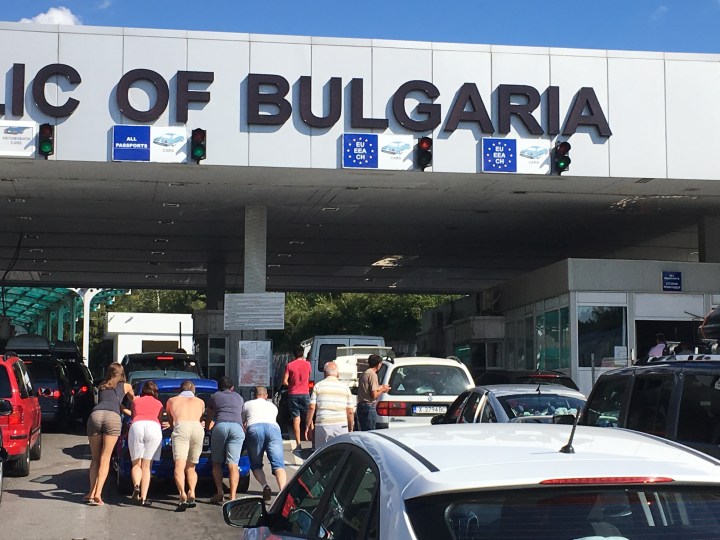When a Bulgarian friend of mine invited me to visit him in Sofia and drive to the Bulgarian coast for a little tour with our friends, I was very excited, mostly because I had little idea what Bulgaria was like, despite the fact that it is bang next to Serbia and we share a lot of history and culture.
That is not to say I knew nothing of it. I knew the basic outlines of Bulgarian history from their settlement on the Thracian lands, their great medieval empire which rivalled Byzantium, the Ottoman rule, the struggle for independence in 19th century, and then the past three major wars which had seen Serbs and Bulgarians on the opposite sides. We of course shared cultural similarities, from the languages that are close enough to be vaguely mutually understandable, to the typical Balkan post-socialist tropes of failed transitions, corrupt mafia-loving governments, fondness of oriental infused-pop (chalga in Bulgarian, turbofolk in Serbian, ridiculous in all languages) and a sizeable educated populations who complain about all of this and often choose to go abroad to make a better living.
But for all of these things, I had no idea what Bulgaria actually looked like. The curious local mix of auto-orientalism and self-aggrandising in our school system, means that the Balkanites rarely know much about their neighbours’ cultures and rarely see the Balkans (with the exception of Greece) as worthy of cultural holidays.
Thus for me the only point of reference were the gaudy brochures flogging budget holidays in soulless resorts of Sunny beach and the image of the golden domes of the wonderful Alexander Nevsky cathedral in Sofia.

Once I was on my way, I was giddy with excitement as I set off from Belgrade with a bunch of our friends from the UK. For them, no matter how much I tried to fight the Orientalist image and out-PC the Westerners, Bulgaria (like Serbia) conjured the typical Borat-esque images of Eastern Europe: dancing bears, donkey-drawn carts, gypsies and liberal use of military-grade weapons.
They got their fill of Eastern chaos early, as we had to outmanoeuvre hundreds of cars, driven by Turkish gastarbeiter returning home for summer at the decrepit Serbian-Bulgarian border. While I was giving angry looks all around, threatening to drive my beat-up KIA into anyone who cut into my queue, my friends got excited to see beggars strolling in the no-man’s-land, shaven fat men wearing gold chains and even volunteered help an elderly Bulgarian couple to push their fuel-less car through the border. With this 2 hour ordeal over, we had 60km to Sofia.

Once we emerged from concrete suburbs, we greeted our Bulgarian friend in front of our AirBnB which was located in sturdy 30s building in the city’s centre. Like most South European cities in late July, Sofia was almost empty as most of Sofians escaped to the coast or mountains. Ever a great host, our friend offered to give us a quick tour.
As we were walking though the main sights, I was impressed by how Sofia blends its 2000 year+ history in its elegant core. Ancient Byzantine churches nestle within neo-classical Stalinist palaces.A mosque, a neo-byzantine bath and remains of the of the forum of the old Serdica all sit calmly above the main metro station. The city’s commercial heart, Vitoshka, starts with the beautiful St Nedelya church, which houses the remains of Serbian king Milutin, and ends with a brutalist cultural cultural centre, while the view is dominated by Vitosha, the city’s majestic 2,290m high hulk of a mountain. There are bits of history and beauty tucked away in every corner, from 20th century palaces with national motifs, to huge parks filled with Sofians drinking beer and chilling.
While I stood wide eyed in front of St Alexader Nevsky Cathedral which was basking in golden dusk, my Western friends were disappointed.
“Where are the donkeys? And the dancing bears?”
“What are you talking about?”, our host, G., replied incredulously “There are no such things here anymore.”
Thankfully, G. decided to fulfil our orientalist fantasises by taking us for dinner at Raketa Rakia, a restaurant celebrating the socialist aesthetic and offering a great range of the pan-Balkan cure-all: rakia. Rakia was complemented with fantastic salads, full of delectable dairy concoctions and fantastic peppers and tomatoes, which Bulgaria is (regionally) famous for. After a brief stint at the stylish Beach Bar by our flat and several “Russian breakfast shots” we decided to call it a night and recuperate as the next day was to include a hike on the Vitosha.
This was a perfect idea, as up above the city was wonderfully fresh and we did not feel any of the scalding heat. Rather than walk all the way up, we took a cable car and ambled onwards towards a very rocky view-point from which we could see the whole city. The mountain was full of hikers enjoying their Sundays, who were greatly amused to see us deadlifting each other to prove our masculinity in a typical 30-going-on-13 fashion. Once we got down, we were in for more Bulgarian fare at Shastliveca, this time to be washed down with some robust local reds. Our night took us on a tour of empty hipster bars around “Art Hostel” and finally to CultureBeat, a great bar with a terrace in the socialist Palace of Culture.
“You disappointed us. There were no dancing bears !”, the crowd started again.
“I don’t think I’ve ever seen one. Brigitte Bardot stopped that in 1990s. They have a refuge in the mountains” G’s friend said, ad G. and I let out a sigh.
“Well gentlemen, you may have some luck tomorrow. Not with the bears. But you will seed the donkeys and carts tomorrow as we are off to the Balkan mountains”, G said, looking over the twinkling boulevards below.















One thought on “Day 1-2: Sofia”